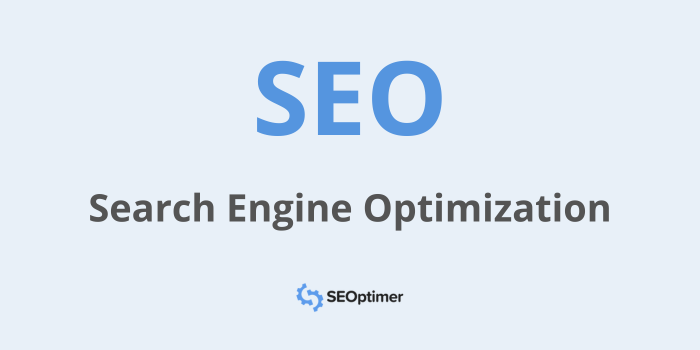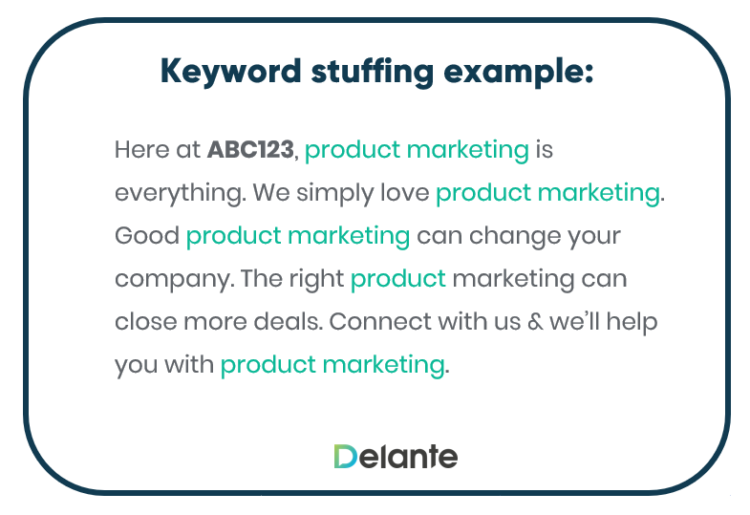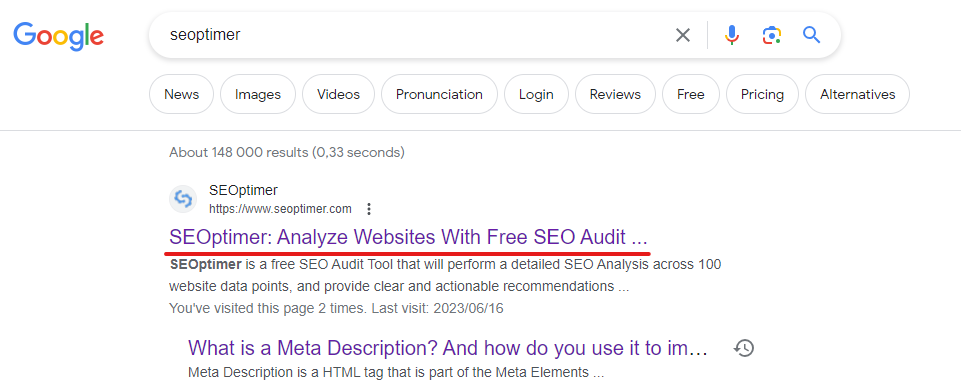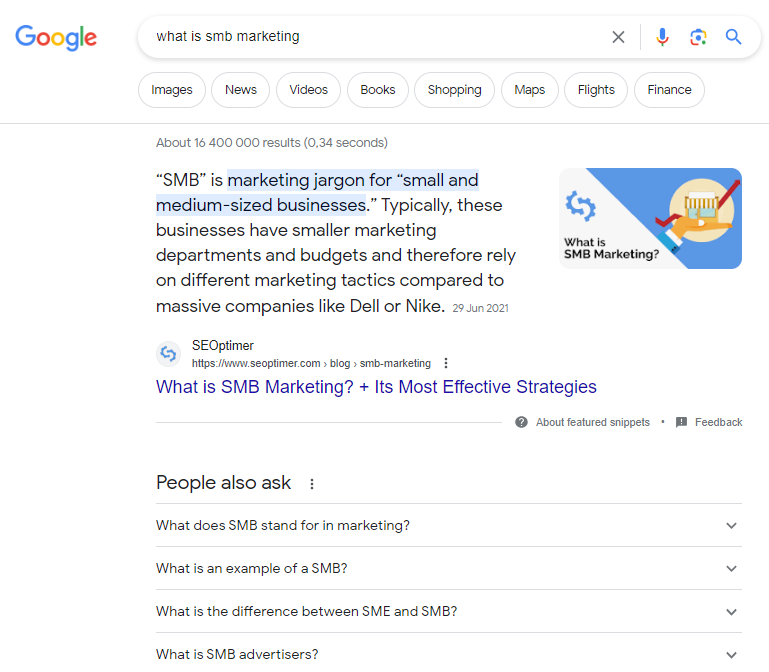
Do you often get confused by the multitude of SEO abbreviations and acronyms used in the digital marketing world? Navigating the complex terminology of SEO can be overwhelming.
This ultimate list of 200 SEO abbreviations and acronyms will help you understand the commonly used SEO terms in plain language.
Whether you're a seasoned SEO professional looking to brush up on your knowledge or a beginner trying to grasp the fundamentals, this list of SEO abbreviations will serve as your go-to reference guide.
What Does SEO Stand For?
SEO stands for Search Engine Optimization. It refers to the practice of optimizing your website's content, structure, and other elements to improve its visibility and rankings on search engine results pages (SERPs).

SEO Abbreviations and Acronyms
A
- A/B - A/B Testing
- AMP - Accelerated Mobile Pages
- API - Application Programming Interface
- ALT - Alternative Text
- AR - Augmented Reality
- AI - Artificial Intelligence
- ASP - Application Service Provider
- AJAX - Asynchronous JavaScript and XML
- ARPU - Average Revenue Per User
- AIDA - Attention, Interest, Desire, Action
- AOV - Average Order Value
- ADL - Algorithmic Deep Learning
- ATF - Above the Fold
B
- B2B - Business-to-Business
- B2C - Business-to-Consumer
- BERT - Bidirectional Encoder Representations from Transformers
- BWT - Bing Webmaster Tools
- BMM - Broad Match Modifier
- BR - Bounce Rate
- BTF - Below the Fold
- BPA - Business Process Automation
- BH - Black Hat (Unethical SEO practices)
- BHW - Black Hat World
- BV - Business Value
- BOFU - Bottom of the Funnel
- BL - Backlink
C
- ccTLD - country code Top-level Domain
- CAPTCHA - Completely Automated Public Turing Test to Tell Computers and Humans Apart
- CF - Citation Flow
- CMS - Content Management System
- CTR - Click-Through Rate
- CPC - Cost Per Click
- CSS - Cascading Style Sheets
- CDN - Content Delivery Network
- CPA - Cost Per Acquisition
- CRO - Conversion Rate Optimization
- CRM - Customer Relationship Management
- CSV - Comma-Separated Values
- CTA - Call to Action
- CLV - Customer Lifetime Value
- CPM - Cost Per Thousand Impressions
- CPI - Cost Per Impression
- CPL - Cost Per Lead
- CPV - Cost Per View
- CWV - Core Web Vitals
- CR - Conversion Rate
D
- DA - Domain Authority
- DMOZ - Directory - Mozilla
- DNS - Domain Name System
- DMCA - Digital Millennium Copyright Act
- DSP - Demand-Side Platform
- DFP - DoubleClick for Publishers
- DR - Domain Rating
- DKI - Dynamic Keyword Insertion
- DLP - Data Loss Prevention
- DTD - Document Type Definition
- DMP - Data Management Platform
- DTC - Direct-to-Consumer
- DM - Direct Message
- DUI - Duplicate URL Indexing
- DT - Dwell Time
- DDL - Data Definition Language
- DHTML - Dynamic HTML
E
- EAT - Expertise, Authoritativeness, Trustworthiness
- EMD - Exact Match Domain
- EPC - Earnings Per Click
- EPM - Earnings Per Thousand Impressions
- ESP - Email Service Provider
- EVC - Event Conversion Rate
- EDU - Educational Institution (top-level domain)
- ETR - Event-Triggered Remarketing
- ESR - Effective Search Results
F
- FB - Facebook
- FCP - First Contentful Paint
- FAQ - Frequently Asked Questions
- FTP - File Transfer Protocol
- FOMO - Fear of Missing Out
G
- GA - Google Analytics
- GMB - Google My Business
- GBP - Google Business Profile
- GSC - Google Search Console
- GTM - Google Tag Manager
- GUI - Graphical User Interface
- GWT - Google Webmaster Toolkit
- GDPR - General Data Protection Regulation
- GDN - Google Display Network
- GCP - Google Cloud Platform
- GIF - Graphics Interchange Format
H
- H1 - Heading 1
- H2 - Heading 2
- HREF - Hypertext Reference
- HTML - Hypertext Markup Language
- HTTP - Hypertext Transfer Protocol
- HCP - Hosted Content Provider
- HVD - Hosted Virtual Desktop
- HMI - Human-Machine Interface
- HTML5 - Hypertext Markup Language version 5
I
- IG - Instagram
- IA - Information Architecture
- IBL - Inbound Link
- IFTTT - If This Then That
- ISP - Internet Service Provider
- IAB - Interactive Advertising Bureau
- IMA - Interactive Marketing Association
- IOT - Internet of Things
- ICANN - Internet Corporation for Assigned Names and Numbers
J
- JSON - JavaScript Object Notation
- JS - JavaScript
- JSX - JavaScript XML
- JVM - Java Virtual Machine
- JGI - Just Google It
K
- KPI - Key Performance Indicator
- KW - Keyword
- KWR - Keyword Research
- KWD - Keyword Density
- KD - Keyword Difficulty
L
- LSI - Latent Semantic Indexing
- LCP - Largest Contentful Paint
- LPO - Landing Page Optimization
- LTV - Lifetime Value
- LSA - Latent Semantic Indexing
M
- MFA - Made for Advertising
- MRR - Monthly Recurring Revenue
- MQL - Marketing Qualified Lead
- MS - Microsoft
- MSN - Microsoft Network
- MVT - Multivariate Testing
N
- NAP - Name, Address, Phone Number
- NLP - Natural Language Processing
- NAPW - Name, Address, Phone Number, Website
- NPS - Net Promoter Score
O
- ORM - Online Reputation Management
- OBL - Outbound Links
- ORM - Online Reputation Management
- OSE - Open Site Explorer
- OS - Operating System
P
- PR - PageRank
- PBN - Private Blog Network
- PFI - Pay for Inclusion
- PFP - Pay for Performance
- PHP - Hypertext Preprocessor
- PPC - Pay Per Click
- PSL - Public Suffix List
- PWA - Progressive Web App
- PFI - Product Feed Integration
- PV - Pageviews
- PVR - Page View Ratio
Q
- QA - Quality Assurance
- QS - Quality Score
- Q&A - Questions and Answers
R
- ROI - Return on Investment
- RD - Referring Domains
- RSS - Really Simple Syndication
- RPI - Revenue per Impression
- ROAS - Return on Advertising Spend
S
- SAB - Service Area Businesss
- SEM - Search Engine Marketing
- SERP - Search Engine Results Page
- SSL - Secure Sockets Layer
- SQL - Structured Query Language
- SERM - Search Engine Results Management
- SERP - Search Engine Results Page
- SEW - Search Engine Watch
- SLA - Service Level Agreement
- SMX - Search Marketing Expo
- SVG - Scalable Vector Graphics
- SAAS - Software as a Service
T
- TLD - Top-Level Domain
- TF - Trust Flow
- TTF - Topical Trust Flow
- TTFB - Time to First Byte
- TOS - Terms of Service
- TM - Trademark
U
- URL - Uniform Resource Locator
- UX - User Experience
- UI - User Interface
- UGC - User-Generated Content
- UTM - Urchin Tracking Module
- USP - Unique Selling Proposition
V
- VOD - Video on Demand
- VA - Virtual Assistant
- VPS - Virtual Private Server
- VR - Virtual Reality
- VPN - Virtual Private Network
- VIPS - Visual-block Page Segmentation
W
- WCAG - Web Content Accessibility Guidelines
- W3C - World Wide Web Consortium
- WYSIWYG - What You See Is What You Get
- WHOIS - Who Is Behind The IP Address
- WP - WordPress
- WWW - World Wide Web
- WAP - Wireless Application Protocol
- WAMP - Windows, Apache, MySQL, PHP
- WH - Whitehat
X
- XML - Extensible Markup Language
Y
- YMYL - Your Money or Your Life
- Y! - Yahoo
- YOY - Year On Year
- YTD - Year To Date
- YT - YouTube
Important SEO Terms You Must Know
On-Page SEO
Refers to the practice that involves optimizing various elements such as content, meta tags, headings, URLs, and internal linking to boost the organic presence of the website. The primary goal of on-page SEO is to ensure that each page is effectively structured and optimized to attract and engage both search engines and users.
Off-Page SEO
Refers to the set of tactics outside of your website to improve its visibility and authority. Off-page SEO includes link building, social media marketing, influencer outreach, and brand mentions.
Black Hat SEO
Unethical practices that aim to manipulate search engine rankings are known as black hat SEO. Black hat techniques violate search engine guidelines and can result in penalties or site de-indexing. Examples include keyword stuffing, cloaking, and buying links.

Image source: Delante
White Hat SEO
Ethical practices that align with search engine guidelines to improve rankings and user experience are known as white hat SEO. Primary techniques include creating quality content, building natural backlinks, and optimizing website structure.
Keyword Research
It is the process of identifying and analyzing search terms that users enter into search engines. Keyword research helps optimize content to target relevant and high-demand keywords.
Backlinks
When other websites in your niche link back to your website, it is referred to as a backlink. High-quality backlinks from relevant and authoritative sites can improve search engine rankings and organic traffic.
SERP (Search Engine Results Page)
The page displayed by a search engine in response to a search query. SERPs show a list of relevant web pages, ads, and other elements such as featured snippets.
Title Tag
The HTML tag that defines the title of a web page. Title tags appear as clickable headlines in search engine results and should accurately describe the page's content.

Meta Description
A brief summary of a web page's content is known as the meta description. They appear below the title tag in search results and can influence click-through rates.
ALT Text
Descriptive text added to an image's HTML attribute is known as an alt tag. It helps search engines understand the content of an image and improves accessibility.
Canonical Tag
An HTML tag used to indicate the preferred version of a web page when multiple versions with similar content exist. Canonical tags prevent duplicate content issues.
Keyword
A word or phrase that users enter into search engines to find relevant content is called an SEO keyword or a search query. Keywords are a crucial aspect of SEO and help optimize web pages for specific search queries.
Crawling
The process in which search engines discover and index web pages is known as crawling. Search engine bots crawl websites to gather information and determine their relevance to search queries.

Image source: TechTarget
Indexing
The process of adding web pages to a search engine's database is called indexing. Indexed pages are considered for displaying in search results.
SERP Features
These are special elements in search engine results pages (SERPs) that go beyond traditional organic listings. Examples include featured snippets, knowledge panels, and local packs.

Anchor Text
The clickable text within a hyperlink is called anchor text. It provides context to both users and search engines about the linked page's content.
Page Speed
Refers to the time it takes for a web page to load. Page speed is an essential ranking factor and influences user experience.
Mobile-Friendly
Websites that are designed and optimized for mobile devices are known as mobile-friendly sites. These websites are prioritized in mobile search results because of Google's mobile-first indexing.

Image source: Segue Technologies
User Intent
The underlying purpose or goal behind a user's search query is referred to as user intent. Understanding user intent helps optimize content to match user expectations.
Duplicate Content
These are identical or very similar content that appears on multiple web pages. Duplicate content can negatively impact search engine rankings.
Internal Linking
The practice of linking one page to another within the same website. Internal links help search engines discover and navigate through web pages.
301 Redirect
A permanent redirect from one URL to another is known as 301 redirect. It ensures that traffic and link juice are transferred to the new URL.
Conclusion
By utilizing this list of SEO abbreviations and acronyms as a reference, you can enhance your SEO knowledge, communicate more efficiently with industry professionals, and take your website's search visibility and performance to new heights.
Remember, mastering these abbreviations is just one piece of the SEO puzzle. Continuously expanding your SEO expertise and staying informed about industry updates will empower you to achieve long-term success in the ever-evolving world of search engine optimization.










